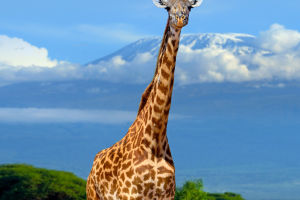The Gemsbok, a striking antelope native to southern Africa, is a remarkable survivor in some of the world’s harshest desert landscapes.
With its elegant horns and unique adaptations, the Gemsbok has evolved to thrive in the arid conditions of the Kalahari Desert and Namib Desert, where temperatures often soar above 40°C (104°F).
Physical Characteristics: A Desert Icon
Standing at about 1.2 meters (4 feet) at the shoulder and weighing up to 240 kilograms (530 pounds), the Gemsbok is a large, powerful antelope. Its most distinguishing feature is its long, straight horns that can measure up to 1 meter (3 feet) in length. These horns are not just for show—they serve as tools for defense and for asserting dominance within herds.
Its coat is predominantly tan with white markings on the face, underbelly, and legs, providing excellent camouflage in the desert's rocky and sandy terrain. This coloration also helps regulate body temperature by reflecting the harsh sunlight during the day.
Adaptations for Survival in Extreme Heat
What makes the Gemsbok a true desert survivor are its unique adaptations to conserve water and endure extreme temperatures. Its large, broad hooves are perfectly designed for walking across the soft sand, while its dark, slender nose is equipped with special adaptations that allow it to conserve moisture.
Additionally, the Gemsbok has a remarkable ability to raise its body temperature to over 40°C (104°F) during the day, which minimizes water loss through perspiration. It only starts to sweat once its body temperature exceeds this threshold, a rare feature among mammals in such an extreme environment.
Diet and Water Conservation
The Gemsbok has evolved to eat a variety of desert plants, from grasses to shrubs, and it is capable of going without drinking water for long periods. This incredible ability to survive without frequent water sources is due to its efficient digestive system, which extracts as much moisture as possible from its food. When water is available, the Gemsbok drinks quickly and in large amounts, storing as much as it can in its body.
Social Structure and Reproduction
Gemsbok are social animals, typically found in small herds that consist of females and their offspring, while males tend to live solitary lives or form bachelor groups. The dominant males protect their territories fiercely, often engaging in spectacular displays of strength by fighting with their horns. Breeding usually occurs year-round, although it peaks during the rainy season. Female give birth to a single calf after a gestation period of approximately nine months.
Conservation Status and Challenges
While the Gemsbok is not currently listed as endangered, it faces challenges such as habitat loss, drought, and poaching. Conservation efforts focus on protecting its desert habitat and ensuring that water sources remain available, particularly as human encroachment into their territories increases. The Gemsbok status in the wild is largely stable, but it remains vulnerable to the effects of climate change.
The Gemsbok resilience and adaptability make it a true icon of the African deserts. Its ability to survive under extreme conditions is a testament to the power of evolution, and its striking beauty adds to the mystique of the harsh desert environments in which it lives.
With continuing to protect these environments, we ensure that the Gemsbok remains a stunning survivor for generations to come!
Gemsbok: Oryx Species Which Are The Ultimate Survivor of the Desert! 🏜️🦌
Video by Wildlife Pedia English







